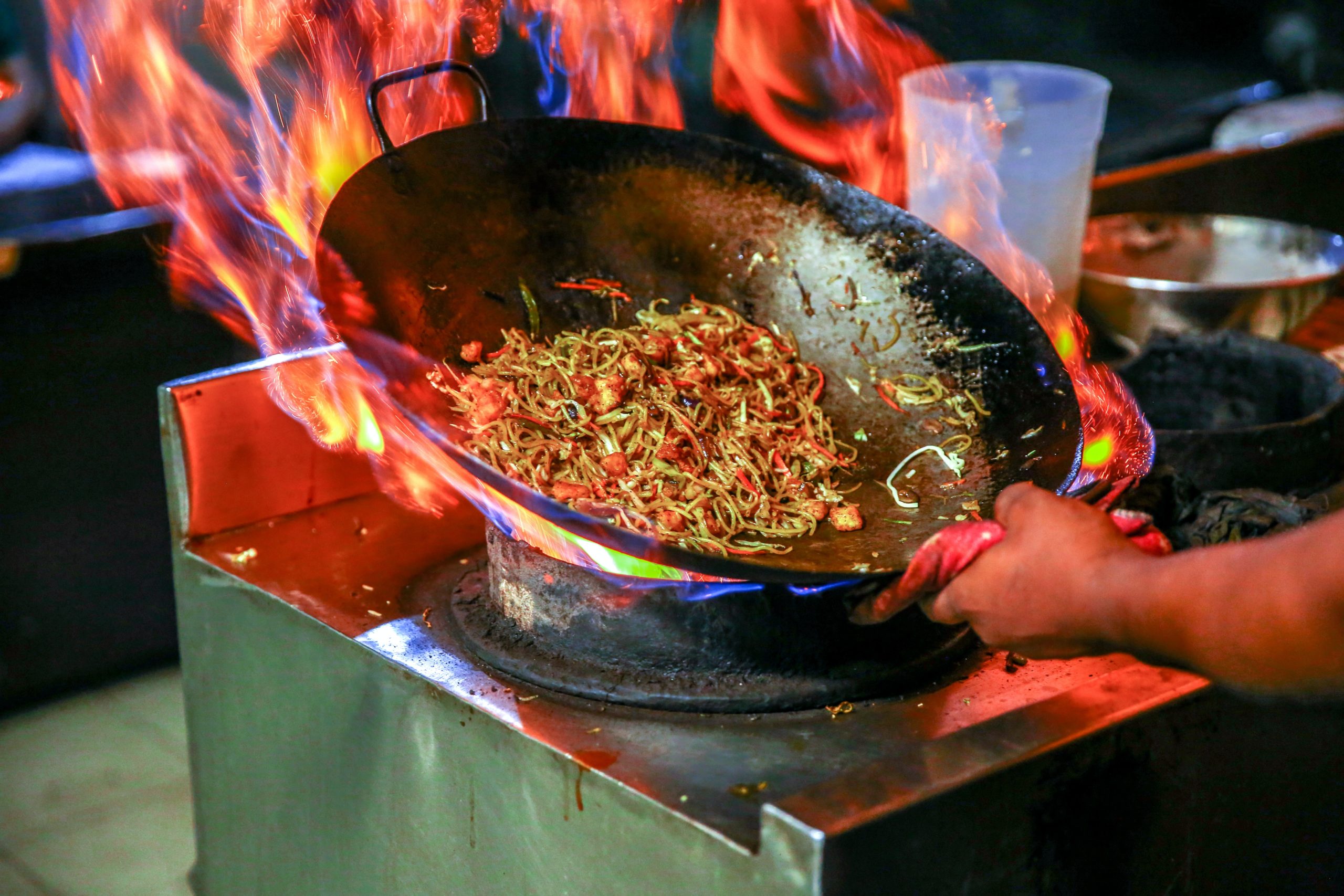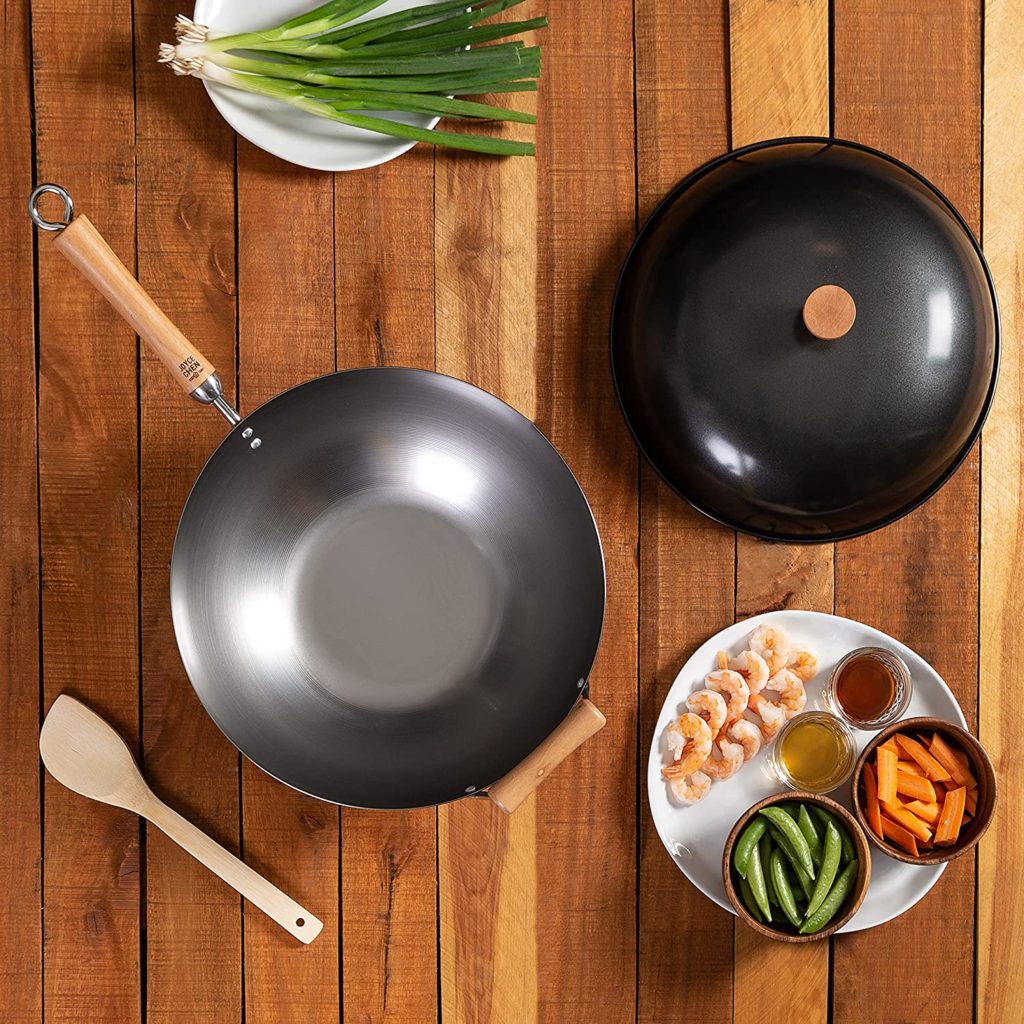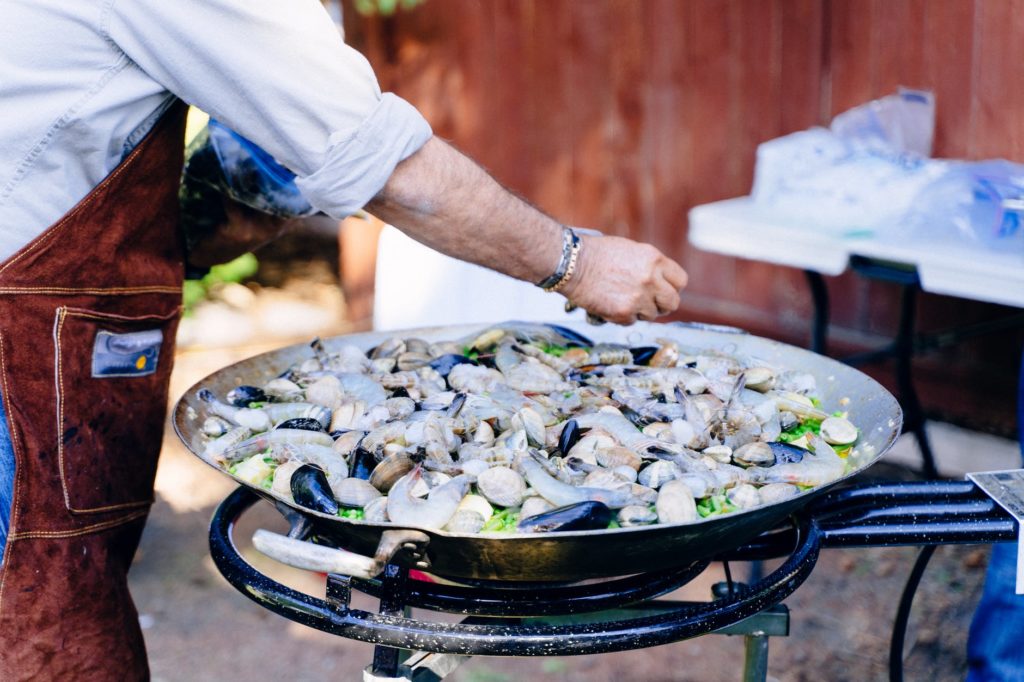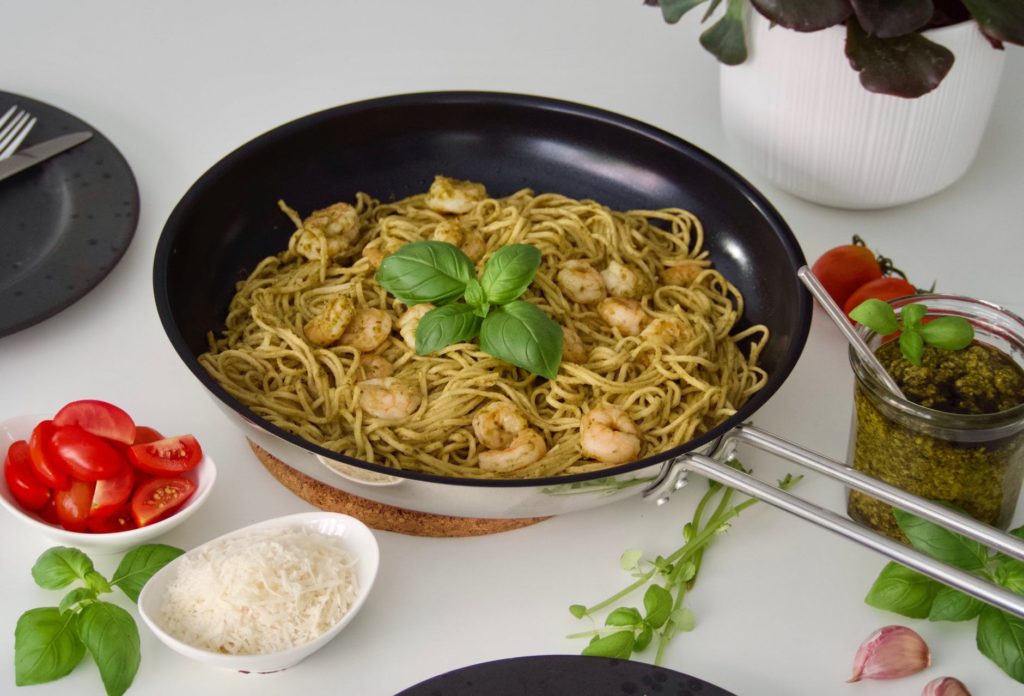One of the essential items in Chinese cooking is a high-quality wok. These pans can hold a lot of food, and you will need to prepare your meals in advance. However, it is necessary to select the right kind of work. If you have a large family, you will need one large capacity. The size is the most important thing you need to consider when buying a new wok. A medium-sized one is perfect for a small kitchen, and a small one will be adequate for a couple of people.
A good wok will have a four to five-inch flat bottom with gently sloping sides and a 12- to 14-inch flare. This will allow you to cook your food with high heat while also providing enough volume to flip your dishes without burning them. To use your Wok, you need to choose a wok with a long handle and a smaller helper handle on the other side. The large handle will facilitate turning and lifting the food, while the short helper handle will make it easier for you to move around.
Tips For Choosing The Best Wok For Chinese Cooking
Here are some pointers on how to choose a wok for your kitchen:
The type of stove and the type of heating element (electric or gas) will influence your wok selection, so think about that first. We nearly always prefer a gas flame, but keep that in mind while choosing a wok if you have an electric stove.
Don’t be tempted to choose a nonstick model if you want an authentic wok hay flavor. These are of dubious safety at the temperatures required for Chinese cooking, as most are rated at 500 degrees or less, and many times you will exceed or come close to that limit.
Because the Wok is the heart of any Chinese kitchen, you must pick one that suits your needs!
Many people appreciate the sweet and savory flavor of Chinese stir fry. Some individuals prefer to eat it in a restaurant, while others prefer to prepare it at home in their own time and comfort. If you prefer making your stir fry, it’s only fair that you have the correct stir fry to work for the job at a reasonable price.
Wok pans are made of a variety of materials. Low heat is required for stewing, and high heat is required for stir-frying in Chinese cuisine, as the material significantly impacts heat transfer. The Wok’s material determines whether you can fully regulate the heat to generate a robust soup or keep the meat fresh while cooking.
Types Of Woks
While I’ve already stated that carbon steel is the most outstanding work material, there are a range of metals and materials to choose from, each with its own set of benefits and drawbacks. To help you make an informed wok purchase decision, we prepared short explanations, information, and thoughts on the most common varieties.
Teflon-Coated Woks Or Nonstick Woks
There are many brands and sizes to select from when it comes to Teflon coated or nonstick woks, which can be bought in almost every big-box retailer. The nonstick cooking surface, quick cleanup, and lack of a wok seasoning procedure are appealing features.
The issue with Teflon works is that they are not designed for high-heat cooking. Five hundred degrees F is stretching it even with the top nonstick wok manufacturers. Stir-frying with Teflon-coated woks at high heats is not suggested. “Heat your wok until just smoking” is an instruction seen in many of our recipes. If you’re using a Teflon-coated wok, don’t follow these instructions.
Wok hei is created by heating to barely smoking temperature, providing a hot nonstick cooking surface. You already have this with a nonstick wok because heating at high degrees can eventually ruin the Teflon covering.
We also don’t recommend deep frying in a nonstick wok since oil residue can adhere to the nonstick surface after repeated use, and we all know that washing nonstick surfaces is a big no-no.
The newest ceramic nonstick woks may pique your interest. We’ve tried them and prefer them over regular Teflon coatings, but they, too, scrape and lose their nonstick characteristics over time due to wear and tear, just like Teflon. We retired our ceramic frying pan after two years of relatively light use
Woks Made Of Stainless Steel
Stainless steel woks have their own set of benefits. They’re non-reactive, so you can use them to make vinegary or acidic dishes like our Sweet and Pungent Pork, Orange Chicken, or even Chinese Braised Fish.
They’re also non-rusting and reasonably light (although certain tri-ply woks can be pretty hefty). You don’t need to heat your Wok to dry it and apply a thin coat of oil after washing it, as you would with a cast iron or carbon steel wok. After each use, brush it with a gentle scrubber and dry it.
One of the essential advantages of stainless steel is that it is non-reactive, making it ideal for cooking acidic meals such as sweet and sour chicken or other recipes, including vinegar or tomato.
I especially appreciate steaming with this stainless steel wok because it has a beautiful glass lid and won’t rust after a long period of steaming. After steaming, carbon steel woks must be cleansed and oiled. Depending on what you’re cooking, all you need is a shallow steamer rack at the bottom of the Wok to set your heat-proof plate, or you can use a bamboo steamer. See our page on How to Set Up Steamers for more steaming options.
There is some oil residue and burned areas on the surface after use, and this residue can be challenging to remove. When using a heavy-duty cleaning pad, you risk scratching the pan.
In conclusion, stainless steel isn’t the best choice for stir-frying, but if you have one, keep it! It’s excellent for steamed, stewed, and braised meals, especially when they’re acidic.
We have a photo of an older stainless steel wok with a similar appearance later in this piece. Maybe some of the more expensive tri-ply stainless steel woks don’t discolor, but I’ve never used one. If you have one, please let us know in the comments!
Cast Iron Woks
Cast iron is used in some of the oldest cookware, including Chinese woks. Cast iron woks, traditionally constructed with two small metal handles, have been used in Chinese households for many years.
My mother used to tell us stories of cooking with cast iron woks and gathering kindling for a fire. While this may seem like a reasonable alternative today, I believe it was the only one available at the time!
Cast iron is hefty and needs to be seasoned and cared for after usage. It is, however, easier to maintain than many people believe, and we adore cast iron cookware! We have American-made cast iron skillets in both large and small sizes and Dutch ovens, grill pans, and a sizeable reversible cast iron grill pan/skillet.
When it comes to casting iron wok care, it must first be seasoned. Before using it for the first time, clean it with soapy water, thoroughly rinse it, and coat the entire Wok in vegetable oil before reheating it over a flame or in the oven.
If the weight of this option concerns you, lighter cast iron woks are now available to make cooking and cleaning more bearable. Light cast iron woks, often known as zhu tie () or “pig iron,” were utilized in China.
These lightweight cast iron woks are less expensive, typically less than ten dollars without a cover. However, any cast iron cookware will rust if not correctly cared for. If you’re up to the challenge, Amazon has a plethora of cast iron woks to select from.
Works Made Of Carbon Steel
Carbon steel woks are by far the most popular, and for a good reason. They’re preferred in Chinese restaurants, and we also use them at home.
Carbon steel is our preferred material, whether it’s a small “pow wok” with a single handle or a colossal wok with two metal handles. Carbon steel woks season wonderfully over time to create a nonstick surface and are less expensive than cast iron.
It takes time to develop a lustrous patina, and ongoing maintenance is required to retain the nonstick quality, but we think you’ll agree that it’s well worth the extra effort. A fresh new American-made carbon steel wok with wooden handles is seen below.
Check out our post on How to Season a Wok if you decide to buy a carbon steel wok. We’ll teach you how to prepare it for cooking, how to build a wonderful nonstick patina, and how to keep it clean!
You might wonder what a good wok patina looks like. Our Wok, pictured below, is a large 20-inch wok that is around six years old, and we manually scrub and wash it after every usage, using a very little quantity of dish soap frequently (but not always).
When the grease is particularly thick, such as after cooking a meat dish, we use dish soap to cut it. However, after preparing a leafy green Chinese vegetable like Stir-Fried Pea Tips, all you need is a gentle scrub and a fast rinse with water!
To avoid rusting, a carbon steel wok must be warmed and given a slight coating of vegetable oil after being washed.
Conclusion
In addition to carbon steel, the Progress Stainless Steel Wok is a good choice for everyday cooking. This model is the cheapest of all and has faux wood handles. Its carbon steel handle will not burn but will melt if heated to the point of “just smoking.” If you want dishwasher-safe work, you should go for this type. This will ensure that you won’t have to buy a different wok for your Chinese cooking.
High-quality work will ensure the best results. Look for a wok that is made from carbon steel. This type will last a lifetime and is lightweight, making it easy to carry. A carbon steel wok will be more durable than a non-steel one, and you’ll be able to put it into the dishwasher. If you’re worried about the weight, you should consider a non-carbon steel one.




